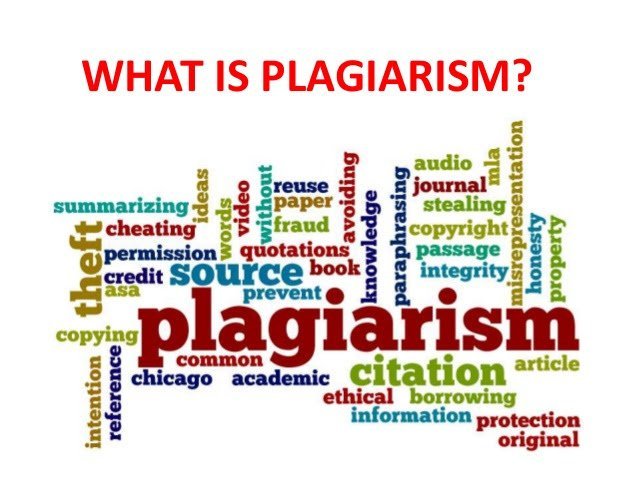re-ACHIEVEMENT 3 guided by @davichi Task//CONTENT ETIQUETTE: by @henryhart
WHAT IS PLAGIARISM
Plagiarism is the act of copying (plagiarizing) another person's work, be it text, image, ideas, or creative work, without the person's permissions, with the sole aim of publication.
TYPES OF PLAGIARISM
SELF PLAGIARISM
To recycle some of your previous words is called “self-plagiarism”. This plagiarism is when a person copy his or her previous work, or try to mix parts of his/her previous works without attribution. Reusing your own work and presenting it brand new. And it should be avoided as it misleads the reader by presenting old work as completely new.
DIRECT PLAGIARISM
The Direct plagiarism a person copy other peoples work, word for word, and the person also claim the copied work to be his or her own. It means word for word transcription or the use of a section of someone else’s work without attribution and without quotation marks.
MOSAIC PLAGIARISM
The Mosaic plagiarism simple means when a person borrows or copy words from a source without seeking permission from the owner. This Plagiarism, occurs when a student borrows phrases from a source without using quotation marks, or finds synonyms for the author’s language while keeping to the same general structure and meaning of the original.
PATCHWORK PLAGIARISM
This is another type of plagiarism which is similar to copying and is perhaps the most common type of plagiarism .This is also related to the mosaic plagiarism. It occurs when the plagiarizer borrows the phrases and clauses from the original source and weaves them into his own writing without putting the phrases in quotation mark or citing the author.
ACCIDENTAL PLAGIARISM
The Accidental Plagiarism means when a person mistakenly copy someone’s else work in the process of making his/her research, this kind of plagiarism is difficult to avoid. Accidental plagiarism occurs when a person neglects to cite their sources, or misquotes their sources, or unintentionally paraphrases a source by using similar words, groups of words, and/or sentence structure without attribution.
EFFECT OF PLAGIARISM
• Plagiarizing someone’s work, when exposed can tarnish the image of the plagiarizer in the society and in that field.
• Plagiarism makes a person (student) lazy to think, reason and analyze his or her work even before publishing.
• Plagiarism leads the plagiarizer into serious problems especially in the aspect of not referencing or citing the person at which the plagiarizer copied from. By doing so the copyright laws are against you
• Plagiarism, being caught leads to waste of time, resources, etc. This means that when your work is caught as a plagiarized work, it could be destroyed and you have to start all over again.
HOW TO AVOID PLAGIARISM
Citing your work properly:
When writing in your post, wordings that are not yours, endeavor to put citation in the writings of which it should bear the full name of the source, the date it was published and the necessary element needed.
For images which was gotten from another source, also do not forget make citationsParaphrasing:
This is rewriting from a source, ideas or information into your own words, without changing it's meaning. But the method can have 80% plagiarism if not done correctly. So you should be careful while paraphrasing and also the key is to format or record without altering the meaning of the idea.Produce your own wordings:
Try your best to give out something from your head, so your work can look exceptional. But while doing this you should be careful not to reuse some previous word which means “self-plagiarism”.Check for plagiarism:
Before you publish your work, you should be able to cross-check and re-read your work to make sure there is no form of plagiarism, even from the source you got your information. (Make your work open to criticism)Proper quotation:
Another way to give credit to the source is to give quotations when you're making reference to someone’s speech. This makes you free from plagiarism acts.
CONCLUSION
In conclusion, we should be able to be creative so as to avoid plagiarism acts. This would help us in our critical thinking and reasoning.
“I have read and understood the Steemit Etiquette on Steemit Community and will do my best to embrace them“
Thank you for staying with me till the end of this writeup. Hope you enjoyed my post.

.jpeg)
.jpeg)
.jpeg)
.jpeg)
Congratulations on your progress, your achievement 3 task has been verified, you may now proceed to the next achievement task.
You have been upvoted by @whitestallion and I’m voting with the Steemit Community Curator @steemcurator03 account to support the newcomers coming into steemit.
Follow @steemitblog for the latest update on Steemit Community.
Rating-2
Thank you so much!